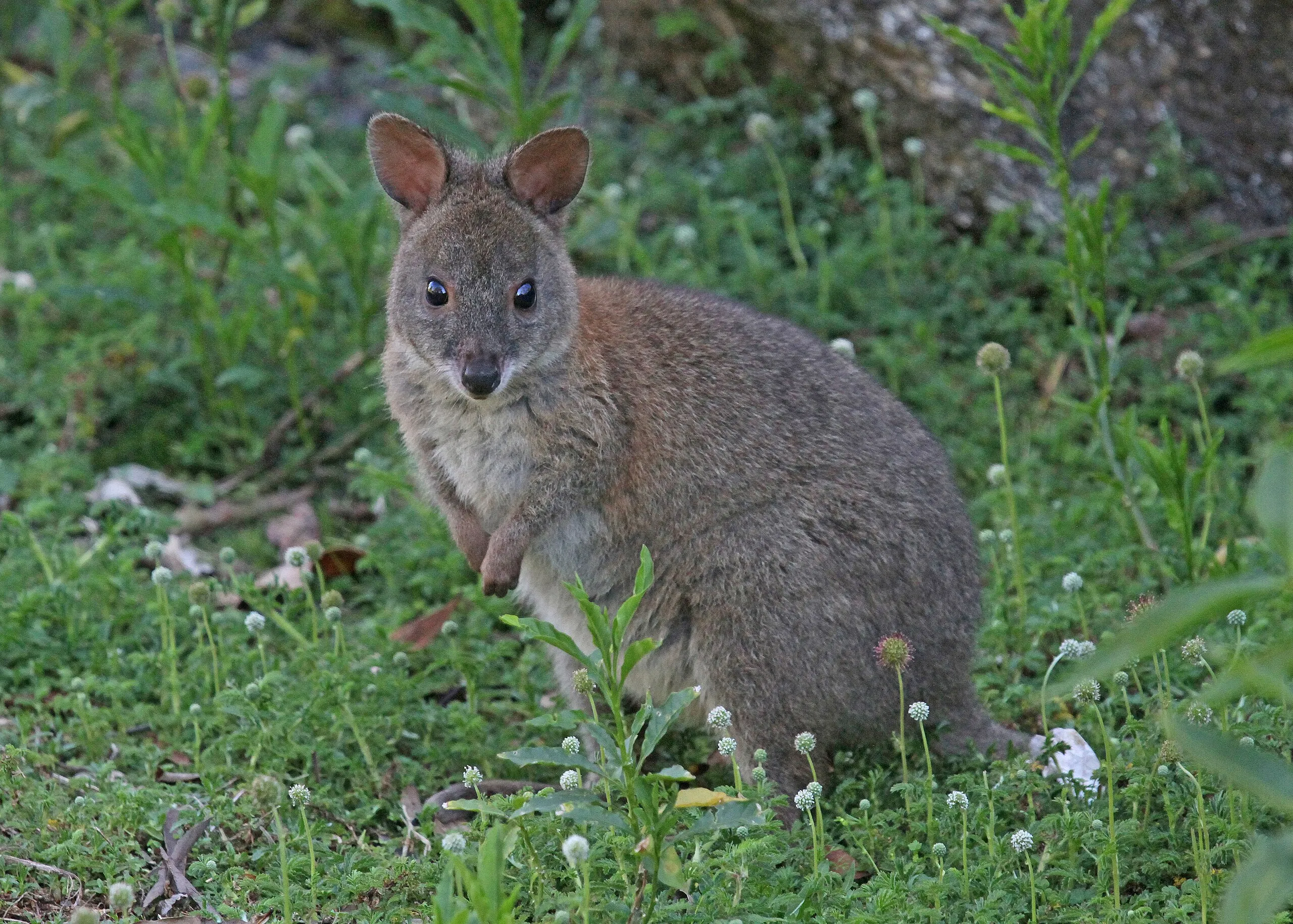
Red-necked Pademelon
Red-necked Pademelon
Red-necked Pademelon
In the lush forests of eastern Australia, the red-necked pademelon makes its home. These wallabies, with their reddish-brown nape, are a beautiful sight. Let's delve into the fascinating world of the red-necked pademelon, explore their habitat, and discover their relationship with humans.
Red-necked Pademelon Basic Infomation

| Property | Value |
|---|---|
| Scientific Name | Thylogale thetis |
| Taxonomic Status | ACCEPTED |
| Rank | SPECIES |
| Vernacular Names | Red-necked Pademelon |
| Kingdom | Animalia |
| Phylum | Chordata |
| Class | Mammalia |
| Order | Diprotodontia |
| Family | Macropodidae |
| Genus | Thylogale |
| Habitats | Australia |
| Conservation Status | Least Concern (LC) |

Size
They measure about 20 to 28 inches (50 to 70 centimeters) in body length, with tails measuring around 14 to 18 inches (35 to 45 centimeters). They weigh about 6.6 to 18 pounds (3 to 8 kilograms), with males being larger than females.

Lifespan
Their lifespan in the wild is about 6 to 8 years.

Distribution
They are found along the coast of eastern Australia, from southeastern Queensland to New South Wales. They prefer moist eucalyptus forests and rainforests.
Red-necked Pademelon Q&A

What kind of wallaby is the red-necked pademelon?
The red-necked pademelon is a medium-sized wallaby belonging to the genus Thylogale.
As their name suggests, they have a reddish-brown nape. They have grayish brown fur with a white belly. In English, they are called 'red-necked pademelons.' They are found in the forest areas of eastern Australia and are herbivores, feeding on grasses and leaves. Unlike other wallabies, they are diurnal, which means they are active during the day. They are often solitary, but can sometimes be found in small groups of a few to a dozen individuals.

What do red-necked pademelons eat?
Red-necked pademelons are herbivores, primarily eating grasses and leaves.
They are most active in the mornings and evenings, foraging for food. They have a good sense of smell, which helps them find fallen fruits and seeds on the ground. They prefer to eat soft grasses and leaves. They also need to drink water and may travel to rivers or lakes to find water.

[Quiz!] Why do red-necked pademelons have a red nape?
The reddish-brown color on the back of a red-necked pademelon's neck is thought to be due to changes in pigments in their fur caused by exposure to sunlight.
This red coloration may also help them identify each other. Additionally, the red color could make them more attractive to potential mates.

[Quiz!] Can red-necked pademelons climb trees?
While red-necked pademelons are not as adept at climbing trees as tree kangaroos, they are capable of climbing low trees or leaning against them.
They are primarily terrestrial, but they may climb trees to eat fruits and leaves.

[Quiz!] Are red-necked pademelons endangered?
The red-necked pademelon is listed as 'Least Concern' (LC) on the IUCN (International Union for Conservation of Nature) Red List.
This means that they are not currently endangered. However, their numbers may be declining in some areas due to habitat loss from development, road accidents, and predation by dogs and foxes. To protect red-necked pademelons, it is crucial to conserve their forest habitat and promote coexistence with humans.

Would you like to become a part of the 'Animalbook.jp'?
Turn your knowledge into Q&A and share it with the world. ※Publication will be activated after purchase. Let's share information together!
Red-necked Pademelon Type of List

Characteristics of Red-necked Pademelons
- Belong to the genus Thylogale
- Reddish-brown nape
- Grayish brown fur
- Whitish belly
- About 20 to 28 inches (50 to 70 centimeters) long
- Tail about 14 to 18 inches (35 to 45 centimeters) long
- Weigh about 6.6 to 18 pounds (3 to 8 kilograms)
- Found along the eastern coast of Australia, from southeastern Queensland to New South Wales
- Prefer moist eucalyptus forests and rainforests
- Diurnal
- Often solitary, but sometimes form small groups
- Eat grasses and leaves
- Least Concern (LC)
Information
Congratulations! You are the first commenter!

Create Your Favorite List!
Red-necked Pademelon
Save the animals you love! Build your own list to quickly revisit your favorites later.

Would you like to leave a comment?
※Please note: This is for the purchase of rights to post comments within the article.
Find Your Favorites!
Our shop offers a unique and attractive selection of goods themed around various animals.
Red-necked Pademelon References
Red-necked Pademelon Introduction of media used

Joseph C Boone, CC BY-SA 4.0, via Wikimedia Commons

From Wikimedia Commons, the free media repository

Help Enrich Our Animalbook.jp with Your Media!
We are constantly looking to expand and enrich our Animalbook.jp with amazing photos and videos of animals. If you have any media that you'd like to share, please contribute and help us showcase the beauty and diversity of the animal kingdom. Your submissions will be credited and featured in our encyclopedia, reaching a wide audience of animal lovers.


















